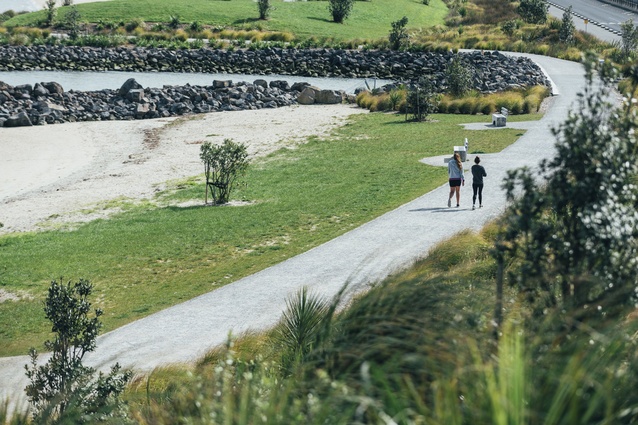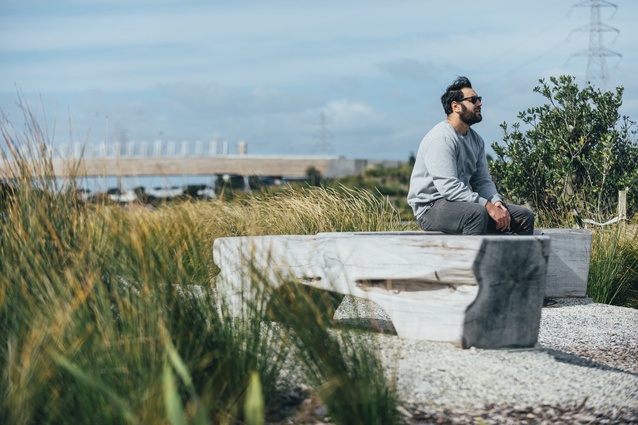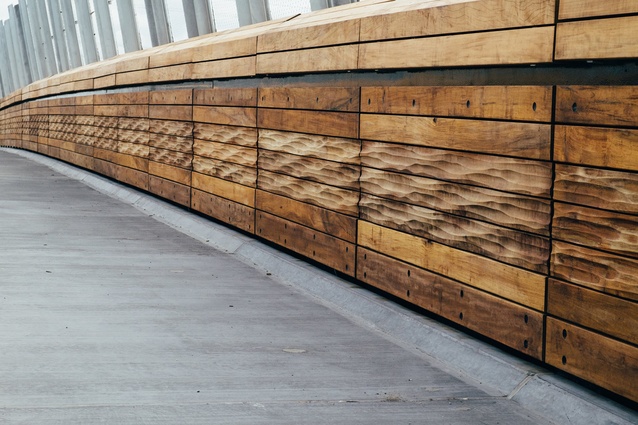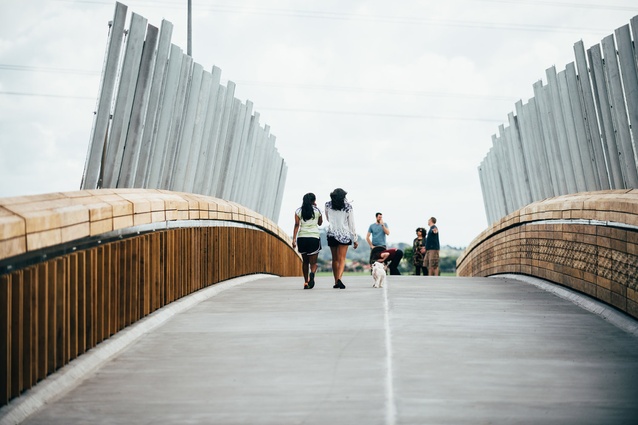Restoration and harmony: Taumanu Reserve
Onehunga’s Taumanu Reserve, ten kilometres south of Auckland city, has won its design and construction collaborators many awards across different disciplines. But its development would never have happened without the tenacity of the community and local businessman, Jim Jackson.
Landscape architect for the project, Sean Burke of Isthmus, says the community fought for some 40 years to have the foreshore and mana of the area restored after Onehunga Bay became a victim of roading infrastructure development.
Onehunga was one of the early settlements of the Auckland isthmus. Until the Orpheus disaster in 1863, most shipping between New Zealand and Britain came to Onehunga via Australia, saving several days sailing up around North Cape to the Waitemata Harbour on the eastern side of the city. It was also important to iwi as a trading route from the Waikato interior and for its proximity to the Otahuhu portage.
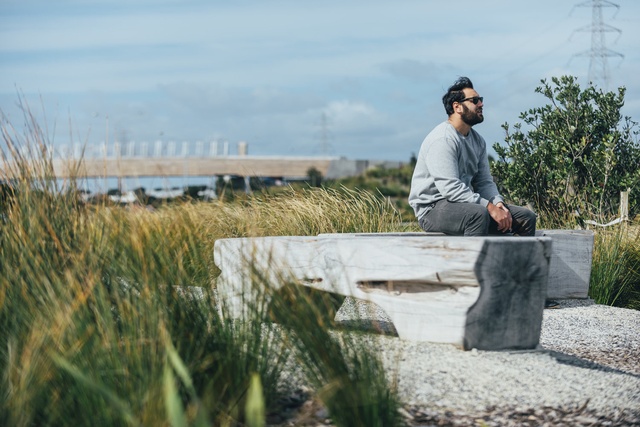
But, Auckland’s central business district grew faster than Onehunga did, and the coast was modified dramatically, with the coastal esplanade at Onehunga Bay becoming a pathway for power, gas, water and telecommunications lines. In 1975, the then Ministry of Works built state highway 20 across the beach.
“Jim Jackson grew up there in the 1950s and 60s,” Sean Burke says. “I guess he saw what it was, what it had lost and wanted it restored.”
Taumanu Reserve is a response to that. It opened in November 2015 and Burke is pleased to still be getting enthusiastic feedback from those who use it. “I think we underestimated how successful it was going to be,” Burke says. “It’s got a bigger catchment than what we initially thought. I still get people from different walks of life saying that the project has really made an improvement to their quality of life.”
While community use and satisfaction is the greatest measure of success in such a project, Taumanu Reserve has also won international recognition. Its latest accolades are from the International Federation of Landscape Architects Asia-Pacific region, where it scooped two outstanding awards last year: one in the Infrastructure category, the other in Parks and Open Spaces.
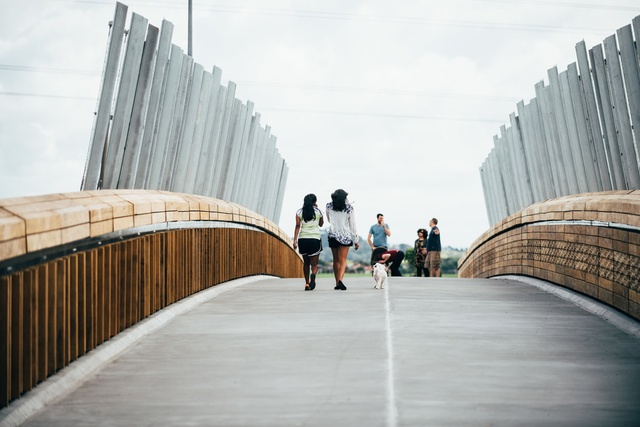
Jurors noted the project was a “beautiful and harmonious amalgamation of culture, history, nature, ecology, amenity, sustainability and community. Whilst land reclamation was involved, it was carried out with a sympathetic and sensitive approach to the environment. This project demonstrated the fine craftsmanship of landscape interventions, materiality and methodology in ensuring the implementation carried through the design intent and environmental concerns. Simple but outstanding approach.”
In recognition of the collaboration between Isthmus, engineers and planners, jurors said they showed “a great level of multi-disciplinary work.” They continue, “The entire park functions as an infrastructure that reconnected the community to the sea, revived a once-obscured sense of place and elevated the quality of life for residents.”
Taumanu Reserve had three simple objectives, Burke says; recreating the harbour edge, re-establishing the mana of the coast by creating new places for people and new habitats for flora and fauna and reconnecting people with the sea by spanning the wide expanse of the motorway.
Throughout, the design references the volcanic and cultural significance of Onehunga and focuses on rebuilding the ‘natural’ characteristics of the coastal edge by using the geologies and coastal processes of surrounding areas as a guide for a new landform.
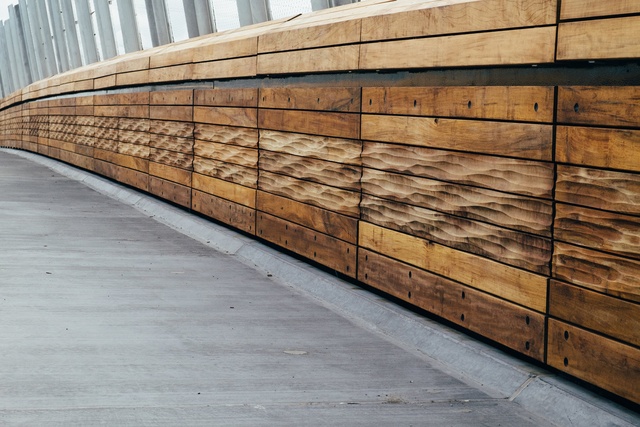
The new coastline stretches out for more than a kilometre, and within that area are nine new beaches – three layered with sand one metre deep to encourage swimming, and one gravel and shell beach planted to deter animals from disturbing the nesting birds.
Mana whenua played an important role, with the five Maori groups with traditional links to the area (Ngāti Te Ata, Te Ākitai, Ngāti Tamaoho, Ngāti Whātua and Te Kawerau a Maki) as kaitiaki (guardians), providing advice to the consultants and ensuring the story of the land is told through the new works.
The interior panelling of the Taumanu Reserve pedestrian bridge was a collaboration with artist Bernard Makoare, and abstracts ideas about tides, fish scales, the patterning of mudflats and spiral shells. One side of the bridge has a hardwood timber balustrade - a reference to the maritime history and construction of the nearby port; the other balustrade integrates the timber cladding with the bridge’s steel truss, a subtle reference to the form of flax, which once grew abundantly on the coast.
This article first appeared on the Landscape Architecture Aotearoa website, which is published by the New Zealand Institute of Landscape Architects (NZILA).

